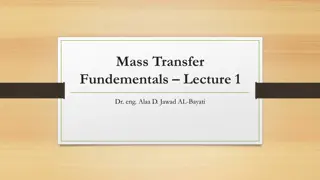Insights from Pilot Study on Mass Extinctions Misconceptions
Study by Kyle Gray and Alexa Sedlacek at University of Northern Iowa delves into misconceptions of mass extinctions. The research explores the scientific definition, contributing factors, and demographics related to mass extinctions based on a pilot study among students. Key findings include first learn age, context, and causes associated with mass extinctions.
Download Presentation

Please find below an Image/Link to download the presentation.
The content on the website is provided AS IS for your information and personal use only. It may not be sold, licensed, or shared on other websites without obtaining consent from the author. Download presentation by click this link. If you encounter any issues during the download, it is possible that the publisher has removed the file from their server.
E N D
Presentation Transcript
Life on a Sterile Planet Results From a Pilot Study on Misconceptions of Mass Extinctions Kyle Gray & Alexa Sedlacek Department of Earth and Environmental Sciences University of Northern Iowa
Mass Extinctions - Scientific Definition Marine biodiversity Three Faunal Groups Big 5 Mass Extinctions Sepkoski, 1997
Mass Extinction Contributing Factors Climate Change Cooling and warming LIPS volcanism Siberian Traps Deccan Traps CAMP Volcanism Bolide Impacts
Pilot Study Open-Ended Survey Define a ME. When did you first learn about MEs? How many MEs have there been? What causes MEs? If you travel back in time, what would it look like?
Pilot Study Administered to Earth History (18 30 students/semester) Earth & Environmental Sci Majors Biology Science Teaching (about 30% of students)
Demographics 68 students F14, Sp15, Sp16 Female = 27, Male = 40 35 Majors Biology (all majors) 44% 29 30 Teaching (all majors) 20% 25 19 # of Students Earth & Environmental Science 33% 20 15 No 8 Response 3% 10 7 3 5 2 0 Freshman Sophomore Junior Senior Post No Graduate Response
First Learn Age and Context Preschool 1% Other 1% When did you first learn about MEs? Elementary 60% College 6% High School 15% Middle School 16% No Response = 1
First Learn Age and Context How did you first learn about MEs? Media History Channel Discovery Channel Science Documentary Other Field Museum Ice Age, Mammoth, Dodo The apocalypse of 2011 Science Class 31% Dinosaurs 52% Books 5% Media 6% Other 6% No Response = 18
Causes Either an ice age, meteor, volcano eruption, just some big, lethal event that takes place that kills organisms. Some sort of mass climate change event changing the global temperature or atmosphere composition Disease, natural disaster, famine, starvation, poaching, meteor, bad environment, etc.
Causes % of Respondents 0 5 10 15 20 25 30 35 40 Meteor/Asteroid Climate Change Natural Disasters/Catastrophies Volcanic Eruption Environmental Change Disease/Famine Humans Atmospheric Changes Temperature Changes Changes Evolution/Adaptations
How Many Mass Extinctions? There have been five mass extinctions. I watch Cosmos. 7 - Complete guess 42- the answer is always 42 I would guess in the ten-thousands. The term "mass extinction" seems kind of vague there have been many different types of mass.
How Many Mass Extinctions? 4.98 18 16 14 # of Responses 9.05 12 10 8 6 4 2 0 1 2 3 4 5 6 Participant Responses 7 8 9 10 11 12 42 200 100s 10,000s
What would you see afterwards? Other Adaptations Depends Life Plants/Small animals Ecosystems Few Organisms 0 5 10 15 20 25 30 35 40 45 # of Mentions n = 98 codes 13
What would you see afterwards? Barren Land (aka The Desolation of Chicxulub) N =17 No vegetation. No animal life on hand or marine life Lots of barren wasteland A whole lot of nothing. A lot of volcanic ash maybe, some flooding, or even massive glaciers Little to no life with some life such as bacteria 14
What would you see afterwards? Carnage n =14 Few Organisms n =11 A lot of dead animals and empty habitats. It d probably be very eerie. Very few if any living organism, be it animal or plant life A lot of carnage. Many bodies of organisms that perished. Only a few animals left on the planet, so I imagine it would be hard to find animals. Lots of dead animals laying on the ground with forests of dead vegetation. 15
What would you see afterwards? Wrecked Ecosystems n =7 Normal Ecosystems n =4 Lots of decomposition. Unbalanced ecosystems. Decrease in plant life Nothing extremely different than what is normal. Just less animals who weren't able to make it through the event. There would be problems in the food chain. If they were herbivores there would be more vegetation 16
Biological View Of Extinction Depending on the mass extinction the view would vary. One of the first mass extinctions occurred when oxygen was produced in large enough quantities to be toxic to anaerobes. I would expect to see large amounts of species filling new niches. The more famous mass extinction occurred when an asteroid struck the Earth. I would expect to see more mammalian type creatures filling new niches. Alex Senior Biology 17
Conclusions Many students think MEs nearly sterilize the planet. Concept initiated at an early age Dinosaurs are a gateway topic Few students understand how MEs can look normal Sample biased by upper-level biology students (37% of participants)
Implications K-6 teachers need to understand MEs Emphasis in our El Ed content courses? Dinosaurs are a gateway topic Emphasize survivors when talking about MEs
Next Steps Broaden Sample to Non-Science Majors Participant Interviews Expand to Other Locations/Populations Best Teaching Practices Media/Film Studies
Questions?? Interested in collaborating? Contact Kyle Gray kyle.gray@uni.edu























